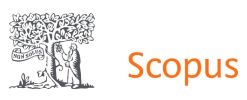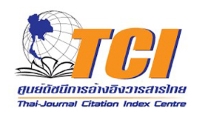JOURNAL DETAIL
Diversity of Arbuscular Mycorrhizal Fungi in Mimosa invisa and Effect of the Soil pH on the Symbiosis
Paper Type |
Contributed Paper |
Title |
Diversity of Arbuscular Mycorrhizal Fungi in Mimosa invisa and Effect of the Soil pH on the Symbiosis |
Author |
Saengdao Kittiworawat, Somchit Youpensuk, and Benjavan Rerkasem |
Email |
scboi027@chiangmai.ac.th |
|
Abstract: Mimosa invisa weed which is used as green manure for increasing soil fertility and organic matter.
They arecolonized by arbuscular mycorrhizal (AM) fungi which increase nutrient uptake by the plant. In addition, roots ofatmosphere. The objectives of this research are (1) to study diversity of AM fungi in is widely distributed in Northern Thailand. M. invisa is a leguminousM. invisa are nodulated with Rhizobium bacteria that fix N2 from theM. invisa in cultivated, uncultivated and seasonally wet areas in Chiang Mai province (2) to evaluate the effect of soil pH (4.0, 5.0 and 6.0) on AM spore production in two varieties of M. invisa (thornless and thorny mimosa) and (3) the effect of AM fungi on the host plant in a pot experiment. Twenty-three species of AM fungi were found in the root zones of the study areas. The highest spore density occurred in uncultivated areas, slightly lower in cultivated areas and lowest in seasonally wet areas. In the pot experiment, AM fungi significantly increased dry weight, nutrient contents (N, P and K) in shoot, root and N in nodule in all treatments. The soil pH had effect on root colonization and spore density. The optimal soil pH for root colonization and spore production of AM fungi was pH 5.0 associated with both varieties of soil pH 5.0 was 88% and 80%, respectively. The highest spore density in soil pH 5.0 of thornless mimosa was 16.3 spores g mimosa had root colonization and spore density of AM fungi higher than thorny mimosa. Therefore, in addition to the ease in handling without the sharp little thorns, the thornless mimosa is more suitable for using as green manure and as natural inoculum of AM fungi in agriculture than thorny mimosa. M. invisa inM. invisa. Root colonization in thornless mimosa and thorny mimosa in the-1 soil while thorny mimosa was 7.3 spores g-1 soil. Thornless |
|
Start & End Page |
517 - 527 |
Received Date |
2010-02-05 |
Revised Date |
|
Accepted Date |
2010-06-22 |
Full Text |
Download |
Keyword |
arbuscular mycorrhizal fungi, Mimosa invisa, soil pH, Rhizobium |
Volume |
Vol.37 No.3 (SEPTEMBER 2010) |
DOI |
|
Citation |
Kittiworawat S., Youpensuk S., and Rerkasem B., Diversity of Arbuscular Mycorrhizal Fungi in Mimosa invisa and Effect of the Soil pH on the Symbiosis , Chiang Mai Journal of Science, 2010; 37(3): 517-527. |
| View:884 Download:258 | |
RELATED ARTICLE
Synergistic Effects of Plant Growth-Promoting Microorganisms on Growth and Development of Terap (Artocarpus odoratissimus Blanco) Seedlings
Article ID: e2023071
Author:Goh Ei Ping, Shiamala Devi Ramaiya and Muta Harah Zakaria
Vol.50 No.6 (November 2023) View: 1,383 Download:624
Article ID: e2023071
Author:Goh Ei Ping, Shiamala Devi Ramaiya and Muta Harah Zakaria
Vol.50 No.6 (November 2023) View: 1,383 Download:624
Arbuscular Mycorrhizal Fungi Community Dynamics and Functioning in Different Rice Cultivation Systems
page: 598 - 607
Author:Ruwanthika Kalamulla, Samantha C. Karunarathna, Jaturong Kumla and Neelamanie Yapa
Vol.49 No.3 (Special Issue II : May 2022) View: 1,945 Download:774
page: 598 - 607
Author:Ruwanthika Kalamulla, Samantha C. Karunarathna, Jaturong Kumla and Neelamanie Yapa
Vol.49 No.3 (Special Issue II : May 2022) View: 1,945 Download:774
Potential of Vetiver (Chrysopogon zizanioides L.), Inoculated With Arbuscular Mycorrhizal Fungi, To Improve Soil Quality in Degraded Soil
page: 1247 - 1258
Author:Dinuka Lakmali, Samantha C. Karunarathna, Lucas A.P. Dauner and Neelamanie Yapa
Vol.48 No.5 (September 2021) View: 1,612 Download:1,283
page: 1247 - 1258
Author:Dinuka Lakmali, Samantha C. Karunarathna, Lucas A.P. Dauner and Neelamanie Yapa
Vol.48 No.5 (September 2021) View: 1,612 Download:1,283
Biochemical and Molecular Characterization of Native Rhizobia Nodulating Leucaena leucocephala with Potential Use as Bioinoculants in Yucatan, Mexico
page: 1 - 15
Author:Magnolia Tzec-Gamboa, Francisco Solorio-Sánchez, Immo Fiebrig, Claudia Torres Calzada, Juan J Peña-Cabriales, Elizabeth Ortiz-Vázquez
Vol.47 No.1 (January 2020) View: 1,243 Download:627
page: 1 - 15
Author:Magnolia Tzec-Gamboa, Francisco Solorio-Sánchez, Immo Fiebrig, Claudia Torres Calzada, Juan J Peña-Cabriales, Elizabeth Ortiz-Vázquez
Vol.47 No.1 (January 2020) View: 1,243 Download:627
Diversity of Bacteria Nodulating Medicago arborea in the Northeast Area of Morocco
page: 441 - 452
Author:Kamal Guerrouj* [a], Mustapha Bouterfas[b], Hanaa Abdelmoumen [c] and Mustapha Missbah El Idrissi [c]
Vol.43 No.3 (APRIL 2016) View: 1,341 Download:265
page: 441 - 452
Author:Kamal Guerrouj* [a], Mustapha Bouterfas[b], Hanaa Abdelmoumen [c] and Mustapha Missbah El Idrissi [c]
Vol.43 No.3 (APRIL 2016) View: 1,341 Download:265
Proteomic Analysis of Bradyrhizobium japonicum
USDA110 in Acidic Condition
page: 335 - 345
Author:Napat Puranamaneewiwat [a,b] Shigeyuki Tajima [c] and Hataichanoke Niamsup* [b]
Vol.33 No.3 (SEPTEMBER 2006) View: 907 Download:242
page: 335 - 345
Author:Napat Puranamaneewiwat [a,b] Shigeyuki Tajima [c] and Hataichanoke Niamsup* [b]
Vol.33 No.3 (SEPTEMBER 2006) View: 907 Download:242
Copyrights © Since 2021 All Rights Reserved by Chiang Mai Journal of Science










